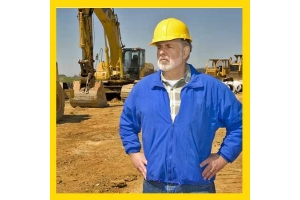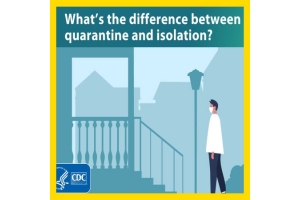Currency
-
June 28, 2022Have you ever been in an environment that was so hot that you felt like basic functioning would take tremendous effort? Extreme heat can envelop you, enclosing you in an uncomfortable case that impacts your ability to move, to breathe and even to see if you are in it long enough.
This is a scenario that millions of workers must face when they go to work in the hot summer months and the heat isn’t cooling down. In fact, research shows that the temperatures in the United States will only continue to go up over the next decade after reaching a historic high in 2021.
It’s Heating Up
According to the NOAA’s National Centers for Environmental Information, 2021 had the warmest meteorological summer (June-August) on record with an average temperature of 74.01 degrees Fahrenheit. This record had been previously set for 85 years by the year 1936 when the average temperature of the summer was 74.00 degrees Fahrenheit.
The 1930s -
June 28, 2022When at work, nearly every employee is compelled to do good and make a positive contribution to their team and organization. But sometimes their knowledge, or lack thereof, can hinder their ability to do just that.
When there’s a lack of knowledge or an information deficit, it can lead to wasted time:
- Searching for the information or tools needed to complete the job
- Asking questions to gather the needed information
- Waiting for answers
But, there are human factors that can also get in the way of resolving an information gap.
While it would make logical sense for an employee to ask more questions when they require additional information, that doesn’t always happen. The human ego can, at times, lead these same great employees to avoid asking more questions because they think they should know the answer or they fear being perceived as incompetent.
-
June 28, 2022Make sure all employees are aware of the hazards of noise-induced hearing loss, so they can take steps to protect against them.
Loud noises in the workplace can lead to permanent hearing loss among workers. Banging, drilling and other mechanical processes can produce loud noises that can damage a person’s eardrum. The types of sounds, noise intensity and duration of exposure can all contribute to hearing loss.
Symptoms may take years to develop, but even brief exposure to loud noises can have a major effect on a person’s life, limiting their ability to hear the world around them. Once noise-related hearing loss occurs, it is irreversible, so it’s crucial to protect your hearing when on the job and off, including when attending concerts and using loud tools or equipment at home.
The Occupational Safety and Health Administration (OSHA) has set clear rules regarding noise pollution in the workplace. If these sounds pass a certain threshold, managers should -
June 28, 2022Heat illness, infectious disease and workplace violence are still on OSHA’s radar for its Spring 2022 Regulatory Agenda, with rulemaking efforts continuing, albeit slowly.
Violations involving these three hazards have typically been enforced via the General Duty Clause – with enforcement efforts already in place for 2022 on heat illness and COVID-19 – and the agency has announced its intentions of creating specific standards for each of them over the past several years.
Likewise, the inclusion of electronic submissions for Form 300 injury and illness data on this year’s agenda should come as no surprise since OSHA has been eager to restore the Obama-era rule that had been mostly withdrawn by the Trump administration.
With all of that in mind, here are the highlights from OSHA’s Spring 2022 Regulatory Agenda:
Heat illness
-
June 07, 2022While educational programmes focusing on the risks of workplace respiratory hazards have increased in recent years (British Occupational Hygiene Society’s (BOHS) ‘Breathe Freely’ campaign and the Institution of Occupational Safety and Health’s (IOSH) ‘No Time to Lose’ initiative), there is still much more that can be done.
This is emphasised by statistics from the Health and Safety Executive (HSE) who estimate each year that there are some 12,000 deaths in Great Britain from lung diseases linked to exposure to hazardous substances at work. In addition, a further 18,000 new cases of lung or breathing problems caused (or made worse by) airborne hazards in work environments will be reported over the same time period.
When considering these numbers, one must account for the fact that symptoms of occupational lung diseases can take several decades to present themselves, but even so, they show no signs of decreasing. The HSE says that the rate of self-reported, work-related -
June 07, 2022Various fire incidents recently occurred underground, and each fire had the potential to result in a major incident. No lives were lost during any of these fires, but some necessitated the activation of emergency and escape procedures.
During investigation it was found that none of these fire detection monitors registered conditions that would trigger fire alarms in the control rooms at the mines. All incidents of conveyor belt related fires were detected by the early observations of employees working in relative proximity, or passing by the locations where the fires originated.
As a result, a decision was made to investigate opportunities for improvement in the effectiveness of the fire detection systems currently deployed in the underground mining facilities of some collieries. A case study involving some underground collieries was done to determine the effectiveness of their fire detection systems and identify the aspects that could be improved.
-
June 07, 2022Employers in Great Britain need to ensure that they are ready to provide the same level of hearing protection to workers who carry out casual work as employees who have a contract of employment when updated personal protective equipment (PPE) regulations come into force on April 6th 2022.
The amendment to the Personal Protective Equipment at Work Regulations extends employers’ and employees’ duties to all workers, regardless of employment type. The news follows the recent revision to the Control of Noise at Work Regulations, which places an emphasis on the priority of control of exposure and risk at the source.
Understanding Legal Requirements
The Control of Noise at Work Regulations follow European Union Directives to ensure that workers’ hearing is protected from excessive noise. The level at which employers must -
June 07, 2022For the chemists and students who are working hard to make scientific discoveries and improvements for the future, it’s vital that their labs and work areas are safe and free from potentially harmful VOCs (volatile organic compounds). ION Science is pleased to have supplied its leading handheld VOC gas detector, the Tiger, to help monitor air quality at the University of Nottingham School of Chemistry GSK Centre for Sustainable Chemistry.
Preventing exposure and ensuring VOC levels do not reach dangerous concentrations in these areas is essential for the safety of those working, and to ensure minimal interference with projects and experiments. There are also other factors to consider, such as shared communal spaces in buildings (like corridors or common rooms) potentially being impacted by high levels of VOCs. Depending on the volume and type of VOC, this could range from mildly annoying to more serious health affects long-term.
In a university, where buildings -
June 03, 2022Whether you have currently deployed a digital solution as part of your EHS (Environmental, Health and Safety) landscape, or you are just beginning your journey of finding and selecting a solution for your company, you will have found that the marketplace is full of options for various parts of your EHS programme.
With high expectations and constant pressure from a younger and savvy digital workforce, rapid development of digital equipment such as computers and mobile devices, coupled with inefficiency in plant processes, requirements for better data sharing and visibility, problems with personnel engagement and a raft of other conditions, are increasing pressure on EHS and other departments to digitalise and centralise solutions for the workforce.
Many companies have taken this opportunity as a positive step to support and engage with their increasing and demanding workforce by digitally engaging them on EHS solutions. The answer to most of the demand has -
June 03, 2022Head protection is one of the most critical elements of personal protective equipment. This is because our heads are delicate and vulnerable and can be easily damaged. Of course, one of our most important organs, our brain, is also contained within our skulls. As with all aspects of health and safety, a proper risk assessment must be conducted first to establish if there is any risk of head injury from the work or task that you are about to engage in.
Again, as with all aspects of health and safety, if there is a risk of head injury then you have to apply the hierarchy of controls to determine the most appropriate protective measures to take. This would involve trying to eliminate the hazard if at all possible. An example might be that if you had a construction activity where there was a risk of dropped objects striking someone on the head, then one way to try and eliminate the hazard may be to separate the people from the risk. This might involve barricading off the area









